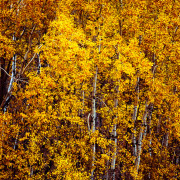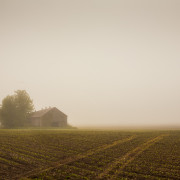Beetle Berry
The Asian Lady Beetle is not the same insect as the “Lady Bug” we remember from childhood. This species, native to Asia, was introduced into the south by entomologists as early as 1916 in hopes of controlling aphid populations.
In 1988, after several attempts, the Lady Asian Beetle population finally took hold, with colonies being reported in the New Orleans area. The species spread quickly, moving north and within five years, was being reported in the Midwest. Within seven years, the species was prevalent throughout the United States and Canada.
A mistake? A beneficial accident? An intended consequence? In Wisconsin, the Lady Asian Beetle is widely considered a nuisance, gathering en masse on houses, in houses, under houses, between houses and on televisions (but only when House is on). They bite, they leave stains on the walls and they leave foul-smelling excretions. Also, in New York, Ohio, Iowa and Ontario, the beetles have been found to contaminate young grapes, altering the taste of wine.
Still, they have been instrumental in controlling the aphid population, and are considered a beneficial insect by farmers, especially in soybean crops which are becoming an ever-more important part of American agriculture.
Whatever your opinion, they Lady Asian Beetle his most likely here to stay, which means we need to come up with a new rhyme for:
“Ladybug ladybug fly away home,
Your house in on fire and your children are gone,
All except one and that’s little Ann,
For she crept under the frying pan.”
Which brings up a good question – what is the deal with that rhyme? Here’s the short answer…
In Medieval England, farmers would set fire to the old hop vines in order to clear the field for the next crop. They would chant this rhyme to warn the ladybugs that were crawling amongst the vines eating aphids. The ladybugs and their larva could escape from the flames but the pupae, called “nan” were stuck to the vines and could not.
There’s probably a beneficial side to everything, whether it’s readily apparent or not.
Canon EOS 5D
Canon EF 100mm f/2.8 Macro USM






Has anybody actually seen one of the old-fashioned red lady bugs recently? I don’t think I’ve seen one in at least 10 years.
spice
Hi Jim,
Thanks for taking a look at my blog!
I haven’t seen the old-fashioned lady bugs in years either. I would suspect that the new Asian Lady Beetle species has overrun and pushed out the “lady bug” species.